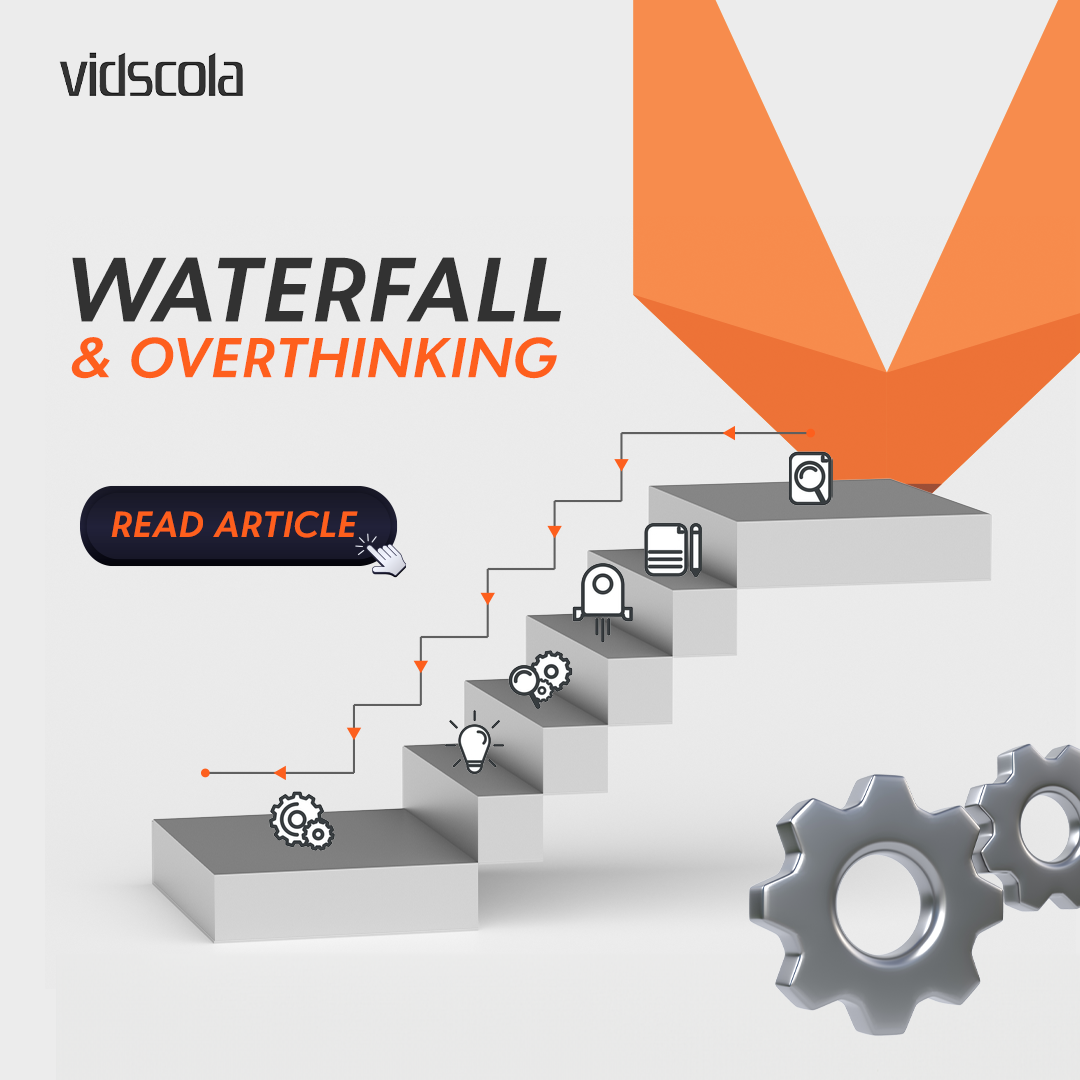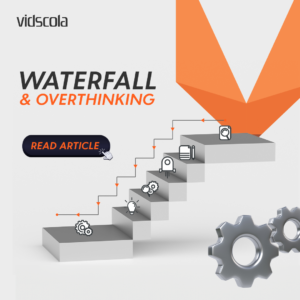
Overthinking and The Waterfall Approach
Author: Haitham Zaki, Principal Agile Coach & Expert Trainer
How to manage Overthinking? During my early years as a Project Manager, I was using the Waterfall Approach AKA traditional approach as a way to manage my projects and Overthinking, that was about 12 years ago where the waterfall is the prevailing project management approach due to many reasons not limited to:
1-Clear Structure:
steps are well defined in sequence, everyone in the project can follow it.
2-Unified expectation:
the customer and the project team are aligned on when the project will end and how much it will cost.
3-Early Commitment:
The project team knows exactly what is needed, which will help them to focus and commit to the end goal.
4-Well known framework:
The most recognized waterfall framework is the PMP framework which is very popular and structured which makes it desirable to be used.
It makes sense why the Waterfall Approach was the best approach, and why most customers preferred this way of managing their project, clarity and certainty always make people feel comfortable, but will this last forever, this is the big question.
The Shift from Overthinking to Agile Project Management
Since the world is advancing towards tech. and software, the technological revolution has made everything changed in the way we live, work and manage, these technologies are disruptive to what we used to do, the software revolution in every aspect of any business has become indispensable for the business growth, Now the game has changed, and the old traditional way of managing projects has become inadequate cause it brings huge risk in the value delivery, so why ??
For me during the waterfall traditional way, we do a lot of overthinking, hence wasting a lot of time thinking about uncertain things which have huge probabilities of being changed rapidly throughout the execution, I recall the quote from Peter Drucker “Plans are only good intentions unless they immediately degenerate into hard work.”.
Unless you start the execution, all plans you have made are just hopes you wish to achieve, the execution is where you will be more certain about your team capabilities to achieve project objectives or may be not, at this point reflection and adaptation are key to maneuver and adjusting your way of working in order to achieve the objectives,
Let me elaborate on this more by telling a story that happened with one my customers.
At the start of the project, I made my initial assessment and observations to know more about the project circumstances and level of certainties, I reached a conclusion that this project should be managed in an iterative incremental approach due to high level of uncertainties, vision and requirements aren’t clear for most of the stakeholders, the biggest challenge I faced is the customer himself who is very skeptical about Agile, and he resists anything related to the buzz word !
As an Agile Coach, I used to show my coaching mindset which aimed to promote for safety environment and learning from making mistakes, that’s why I didn’t challenge my customer in the beginning, I said “Ok, let’s do it your way and reflect on what occurred, change and improve if necessary”
Here are some of what happened which won’t be a surprise for you:
- Time waste: Wasting a lot of time gathering all requirements, because the customer didn’t know everything at the start.
- Big upfront Plan: Consuming huge amounts of time planning for every aspect of the project, time, cost, risk, resources, etc.
- Changes are very risky: When something changes, it’s simply a nightmare cause any change will have a big impact on many other elements, hence making the adjustments very complex.
- Low Team moral: Due to re-work, lack of productivity, team complexity and silos, the working environment was disturbing.
After suffering for few weeks from this approach, finally the customer gave up to try different way and take new ride, finally I will be able to manage this project the way it should be
Once I switched to Agile, it went magical !!! absolutely not , things take time to change but at least we started the put the team and the project into the right direction, trust between the team and the stakeholders started to be well established, from the point I can relax and be sure that we are working all together moving to the same direction to achieve the same objectives, things will be tough sometimes, challenges will arise definitely, this is normal in any project, but the most important thing is to realize that with the business environment we are living now, with the high unprecedented amount of uncertainties we are facing, there no room for overthinking, it will be too late to overthink, what you need to do is to :
- Have a vision.
- Develop High level roadmap (not detailed).
- Think about the details in the short term.
- Execute the short-term plan.
- Reflect on what occurred and adapt to the new findings.
- Your customer is your partner not the buyer.
In a nutshell:
Waterfall methodologies is no longer valid to be used purely as it is, it has to be mixed with Lean-Agile mindset in order to maximize the value, minimize the risk and deliver happiness and satisfaction to our customers.
https://vidscola.com/?s=agile&post_type=trainingcourse

Tagged with:
- #AnxietyRelief
- #CalmerMind
- #CalmMind
- #CalmYourMind
- #HealthyMind
- #MasteringOverthinking
- #MentalClarity
- #MentalHealth
- #MentalWellbeing
- #MindfulLiving
- #Mindfulness
- #MindfulnessPractice
- #MindfulnessTechniques
- #NegativeThoughtPatterns
- #Overthinking
- #PositiveThinking
- #SelfCare
- #StressManagement
- #StressRelief
- #StressReliefTips
- #Vidscola
- #Wellness